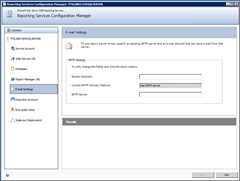Configuring Excel Services & PowerPivot on multi server Topology

I have been working with a couple of colleagues, James Dawson and Russell Seymour , on installing and configuring PowerPivot within a SharePoint 2010 beta 2 farm. We used the following instructions to install PowerPivot on one of the application tier server: http://msdn.microsoft.com/en-us/library/ee210616(SQL.105).aspx . After following the instructions we were able to verify the installation as we had a SharePoint site with PowerPivot gallery. We managed to uploaded and open a couple of Excel workbooks, with PowerPivot embedded, within the web browser. Also we were able to connect to the PowerPivot service and could see the PowerPivot data files loaded. When I tested the slicers I got greeted with the following error: We did some research and found the following blog post: http://powerpivotgeek.com/2009/12/11/excel-services-delegation/ . I implemented the changes it recommended to our Excel workbooks and tried again this time getting the following error: However at th
